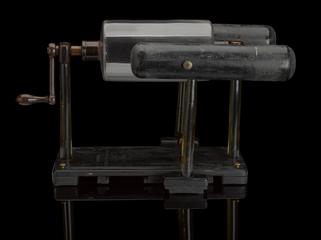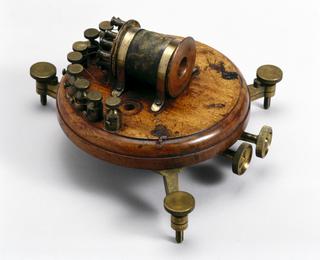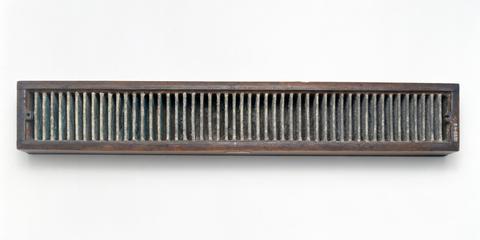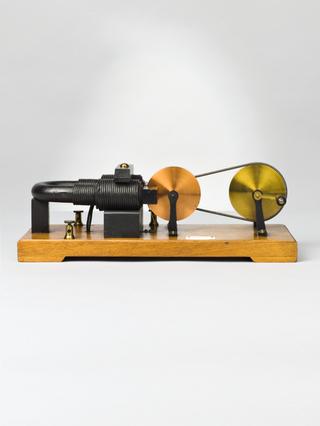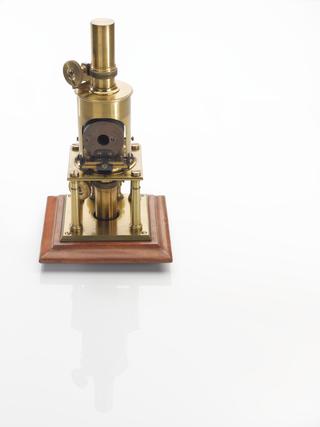
Crookes' shadow tube, 1914
- supplier:
- J. J. Griffin & Sons J. J. Griffin & Sons




Crookes discharge tube on wooden with a hinged aluminium Maltese cross by J. J. Griffin and Sons, 1914. In this tube the impact of the cathode rays on the glass causes fluorescence as in the Fluorescence Tube. By interposing a shape, Crookes was able to demonstrate that cathode rays have a preference for travelling in straight lines, clearly shown by the shadow cast on the end of the tube.
Details
- Category:
- Electricity and Magnetism
- Object Number:
- 1914-77
- Materials:
- glass, wood (unidentified), aluminium, copper and complete
- Measurements:
-
overall: 280 x 240 x 120 mm
weight: 0.25kg
weight: 0.55116lbs
weight: 3.25kg
weight: 7.16506lbs
- credit:
- J.J. Griffin & Sons Ltd
